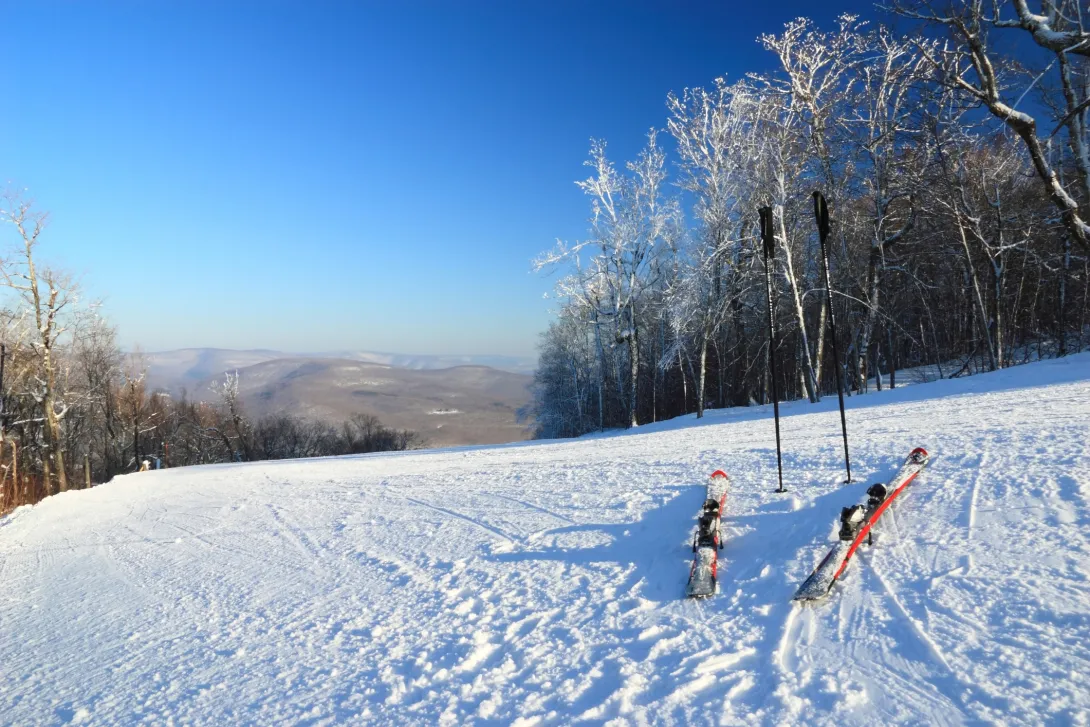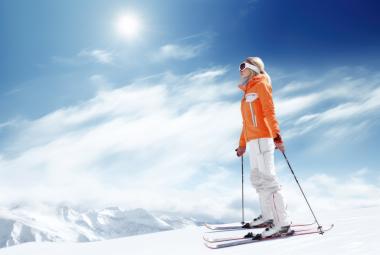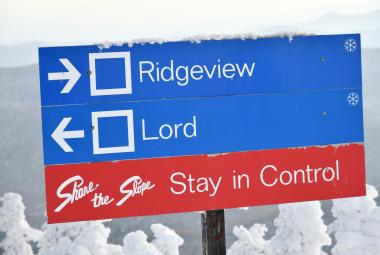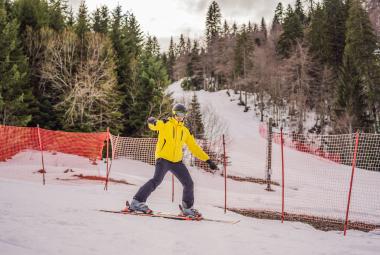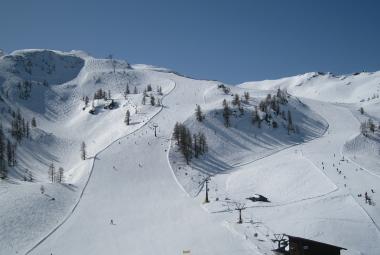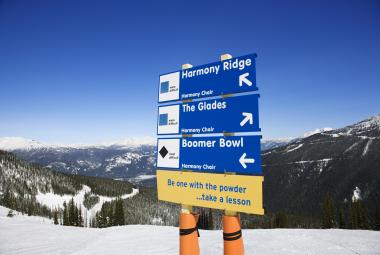Nothing can quite put as much fear into a skier as a patch of ice while coming down the mountain.
The transition from groomed snow to hard ice leaves many skiers instantly concerned, as the likelihood of losing control and falling seems to exponentially go up.
And rightfully so, icy patches in skiing are one of the top concerns, because it can afflict beginner slopes just as much as a black diamond trail. Plus, losing control because of ice could lead to one of the most dangerous accidents on a ski mountain: collision with another skier.
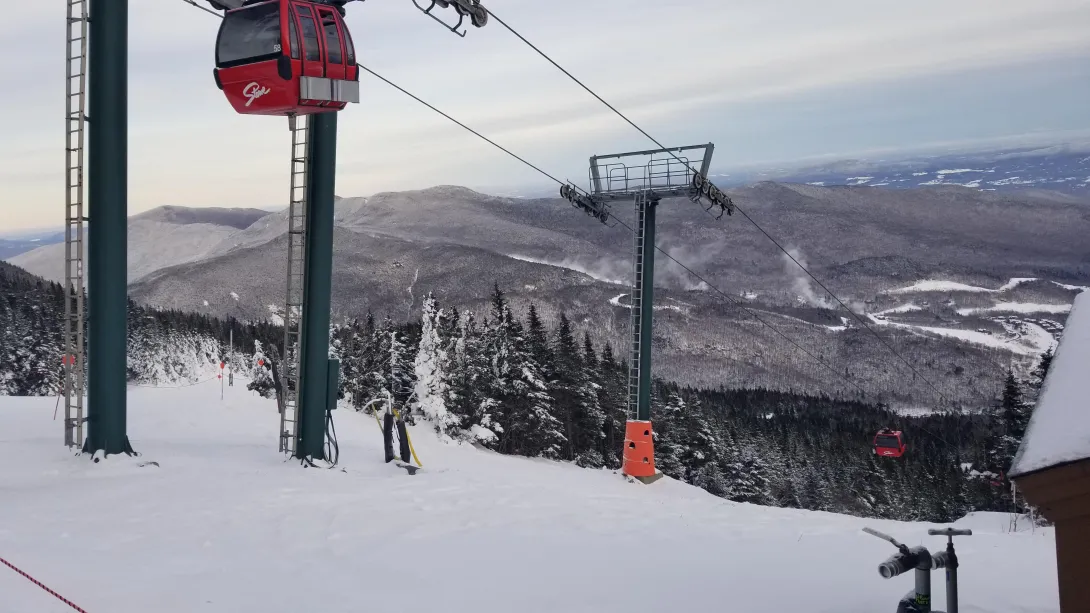
The good news is there are a few good tips for dealing with ice so that if you run into some, you can handle it like a pro.
Stop and look
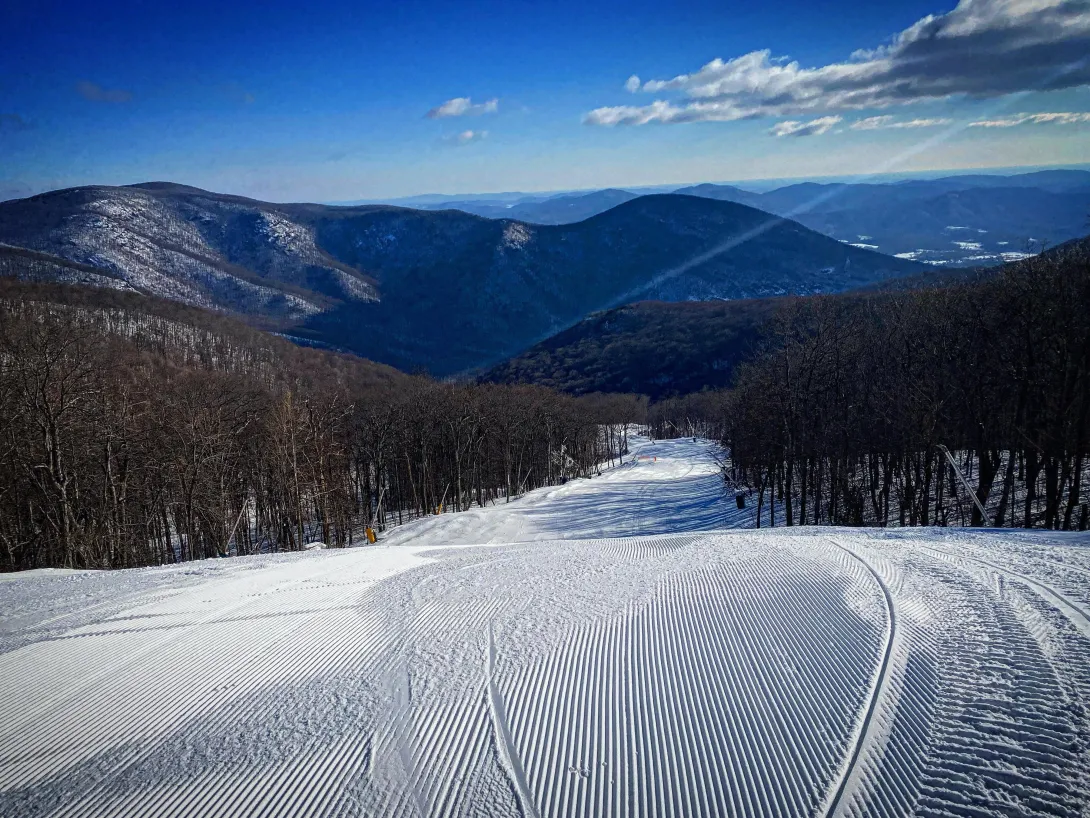
If you spot ice coming up ahead, your best bet is to find a spot on the side of the trail to stop and survey what's ahead.
New skiers will just go right into an unfamiliar trail and just scrape down the middle until they hit a bump of built-up snow.
What you should do instead is stop at the top of a trail you are not familiar with and assess where the heavy ice patches are and avoid those sections and not be a contributor to more of the problem.

Ski as much as possible to the edges of the trail and go against the carving pattern.
Ideally, you can find a break in the ice where there's more snow and hit that part.
Take a wider stance
Set a wider base on the hard ice compared to when you're on snow.
The wider your stance that you can naturally handle, the better your chances at staying upright.
Get your weight over the carving edges. This means put more pressure on the ski edges (especially when going downhill) in the turn and finish (extend) your turns more.
Instead of leaning back and upward, you’ve got to press your upper body forward and down. Sort of curl your chest over the skis instead of away from them.
It’s counterintuitive because steeps make you want to lean back. You need to engage the entire length, and then apply weight over it.
Do a speed check
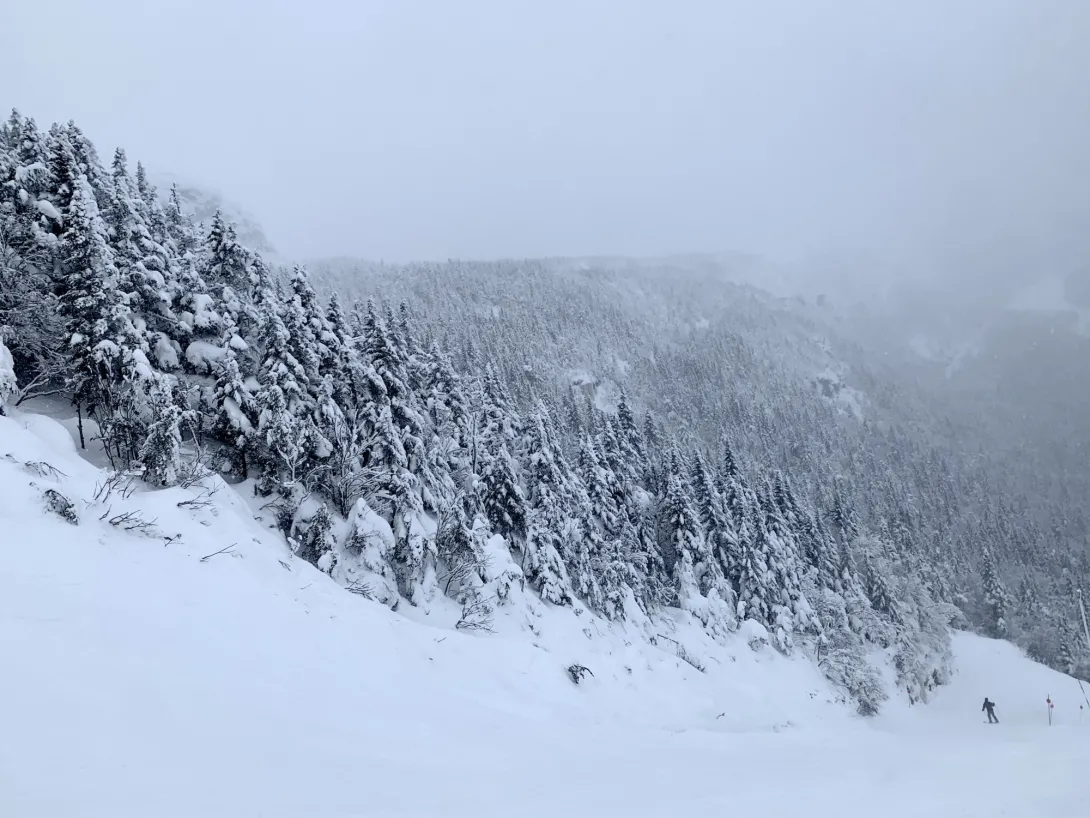
Slow down as you’re about to enter the steep part and/or save your turns for the flat part below the steep part.
This action is the easiest to implement as it requires zero technique changes.
Also keep your distance from others when doing this.
Try not to turn on ice
Another piece of advice is try to avoid turning on ice.
Instead, just keep steady until you hit your next soft spot to brake or turn.
Bend your knees more and stay in control. Make slow, deliberate, gradual movements.

